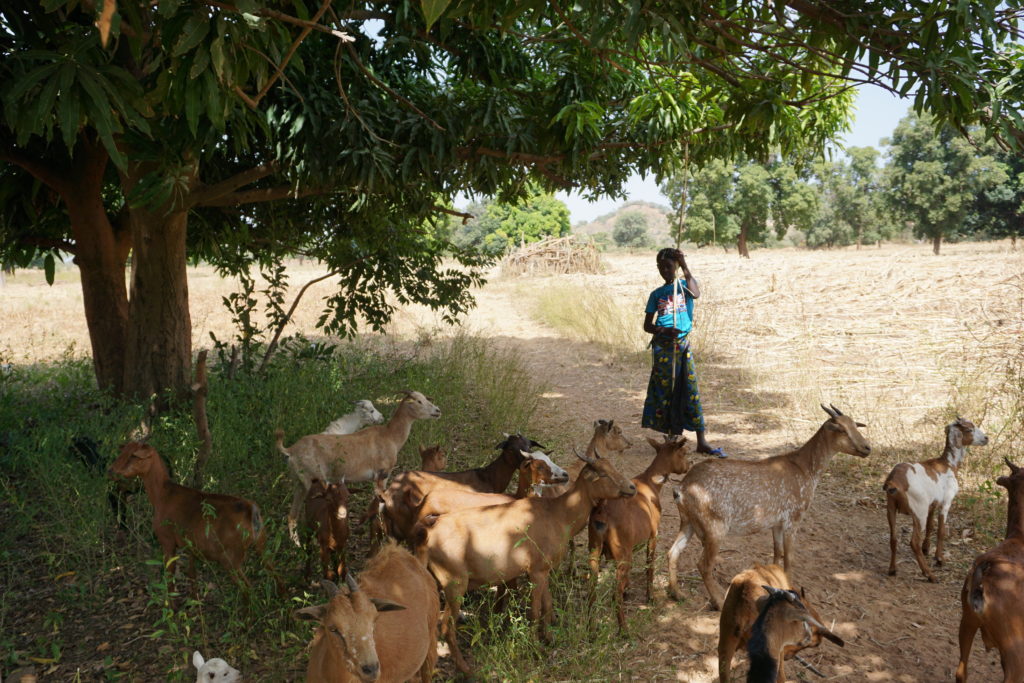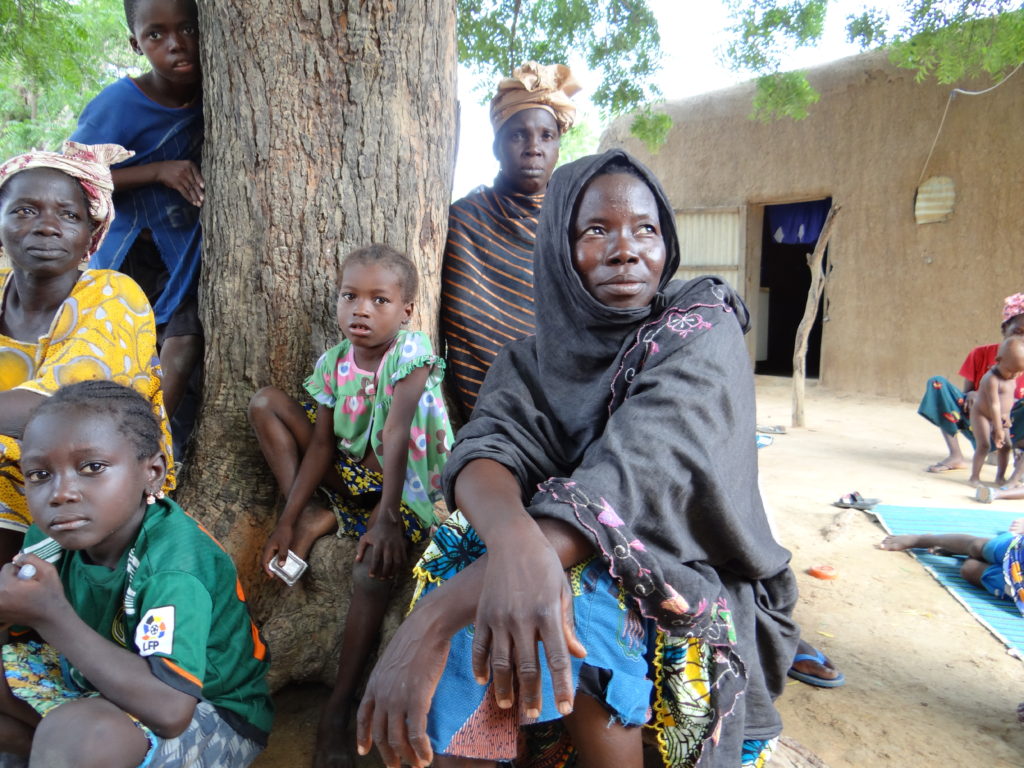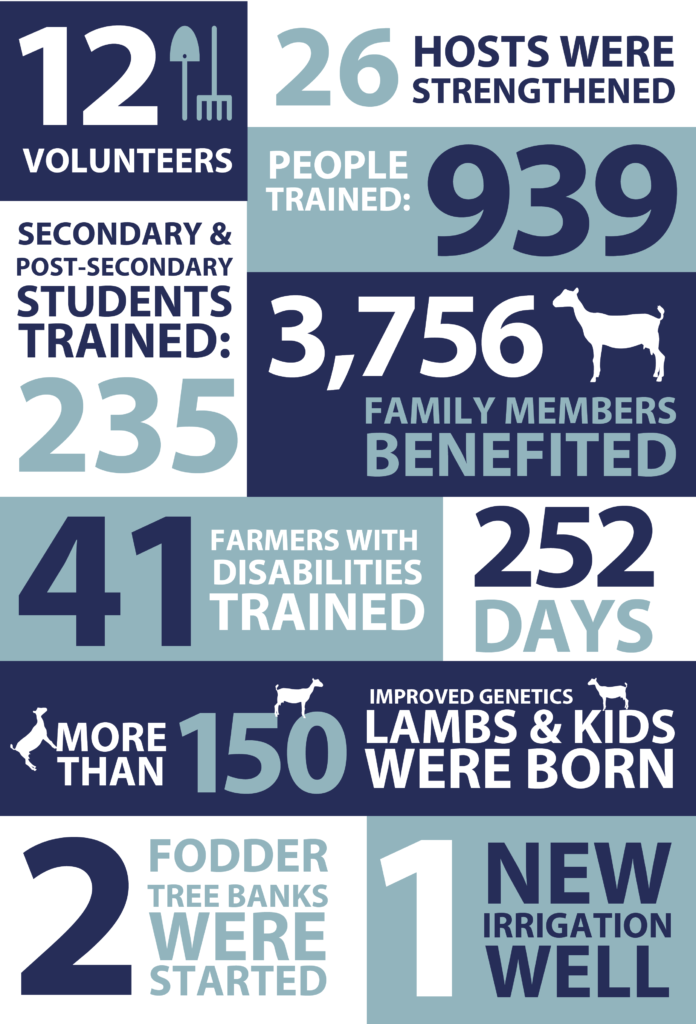Common Pastures Project Results
COMMON PASTURES: Sustaining flocks, farms, and families project (F3P) is implemented by the U.S. based Browse and Grass Growers Cooperative as a Volunteers for Economic Growth Alliance (VEGA) Farmer-to-Farmer Special Program Support Project funded by the U.S. Agency for International Development (USAID). This past June marked the end of a second successful Farmer-to-Farmer (F2F) small grant initiative in Mali, West Africa, actualizing the concept of farmers helping farmers and cooperatives helping cooperatives.


The Goal of this project is to enhance the quality of life for farmers and their families through information, training, and cost-effective implementation of sustainable small ruminant production, management, and marketing practices. Internationally, improving small ruminant production and marketing practices through information, technical training, and value-chain development is a primary need for smallholder farmers and is critical for Mali farmers.
The Program Beneficiaries are smallholder, low-resource, cooperative members, and their families, including youth, single and widowed women, farmers with disabilities, and students attending agricultural secondary and postsecondary schools.
Hosts are smallholder, low-resource farmer cooperatives and agro-pastoral institutes in the Koulikoro, Sikasso, and Ségou regions of Mali, West Africa.
Challenge: There is a high regional demand for Malian livestock and meat. Mali possesses the most important livestock population in West Africa. Livestock products rank among the top 10 agricultural commodities produced in Mali and the combined value accounts for approximately half of Mali’s agricultural GDP (FAO, 2014). Small ruminants are especially important in rural Mali as 80 percent of the population own sheep and/or goats and depend on their contribution to family income and food security. They are a socially acceptable business for women, with low initial investment, minimal labor demand, and easy market access. Youth and young children safely interact and share in the daily care of sheep and goats, keeping both out of trouble for much of the daylight hours outside of school.

And yet, livestock inventories over the last 20 years have not been increasing in productivity and are far behind the productivity rates in other developing countries. The nomadic or semi-nomadic grazing traditions and techniques are quickly becoming less effective and not transferrable to the smallholder farmers’ more confined flocks. This is due to many factors, including climate change and sparse grazing areas being broken up by increased violence and drought in the north; large landholders; open pit mining; and foreign investors in the south. The demand for animal products in Mali is only partially being met, while the demand for meat is predicted to grow steadily in coming decades (FAO, 2014). The productivity of Malian herds will need to improve dramatically to prevent the gap between demand and supply from increasing further.
Opportunities for financial impact: Small ruminants in Mali, as in other developing countries, play an important role in alleviating the poverty of rural communities (Alary et al. 2011). In addition to being a tradable commodity, sheep and goats serve as a preferred wealth store, not only among farmers and herders, but also among urban dwellers (Roncoli et al. 2007, Turner 2009). Sheep and goat investment is safer due to “lower perishability (compared to grain stores and paper money), limited liquidity (protection from requests by others), and ability to grow over time” (Turner, 2009 p. 749). Small ruminants serve as a source of cash-on-hand to cover household emergency expenses (Alary et al. 2011) and provide insurance to mitigate the risk of catastrophic crop losses (Turner et al. 2014).
Advantage: Sheep and goats are unique when compared to other livestock. They do not thrive in industrial farm confinement systems or reproduce with the frequency or volume of chickens or hogs (e.g., three kids or lambs versus 20 haram piglets or more per year). In comparison to cattle and hogs, more labor is required per meat yield. Yet, in low resource environments, sheep and goats do remarkably well. They are able to utilize moisture from morning dew and harvest their own maintenance feed from prickly brush and high branches.
Around the world, in desert, or drought areas, sheep and goats thrive where cattle will perish. With stable sources of water and adequate nutrition, goats are milked through dry seasons that quickly dry up cows. Increasing the productivity of Mali’s small ruminant breeds will provide a predictable source of income for smallholder farmers and a high quality source of protein and fat to supplement the family’s basic diet of rice or maize, even in the face of climatic uncertainty. Small ruminant production in villages, assuming best practices, is unlikely to be threatened by the potential invasion of large industrial farming systems.
Objectives addressed by the 12 volunteers include:
• Feed and forage supplementation strategies: 2 assignments. 4 volunteers.
• Flock productivity through breeding: 1 assignment. 1 volunteer.
• Cooperative capacity building and leadership: 2 assignments. 2 volunteers.
• Product branding and marketing: 1 assignment. 2 volunteers.
• Food security and family nutrition: 3 assignments. 3 volunteers.
